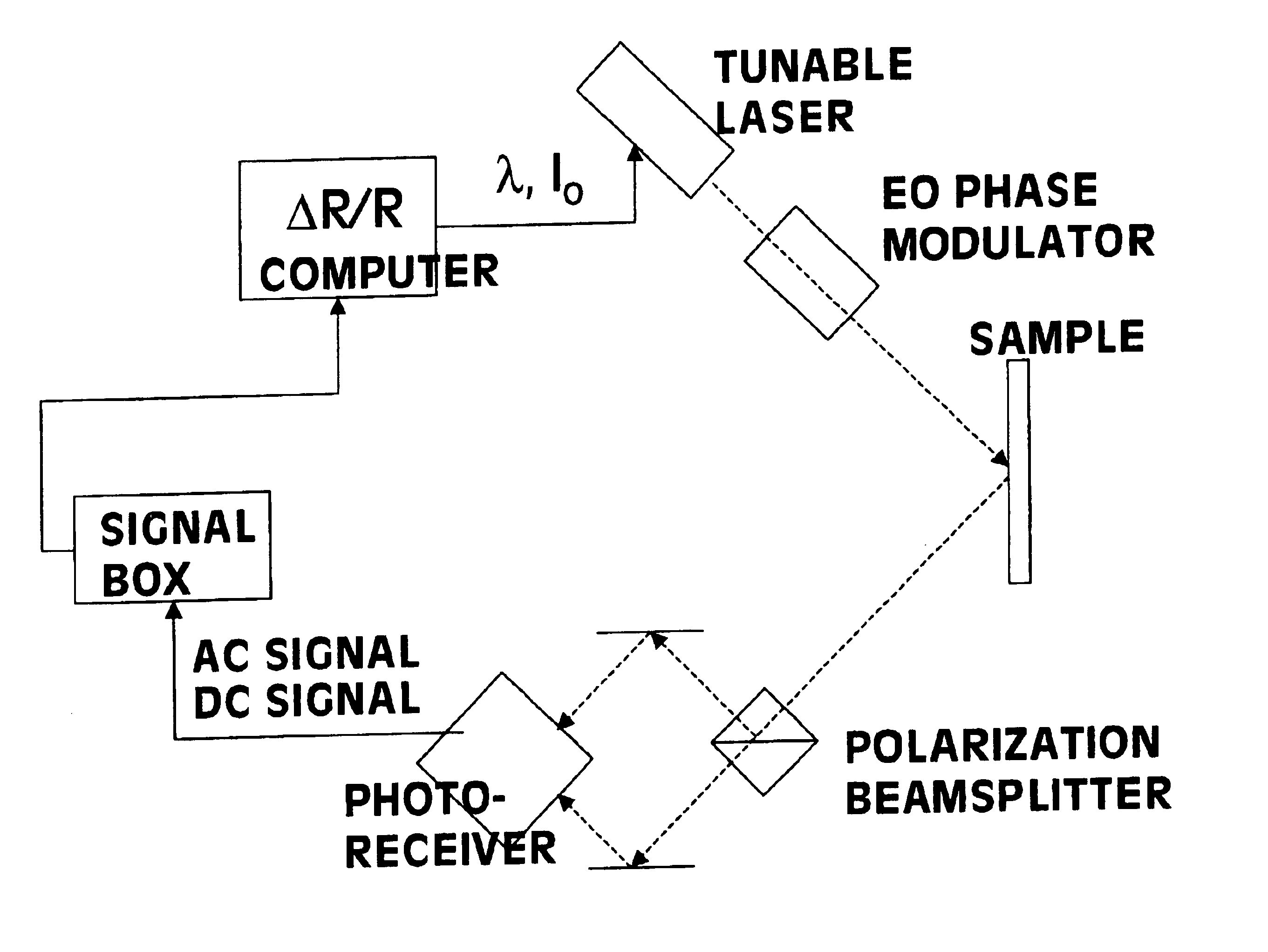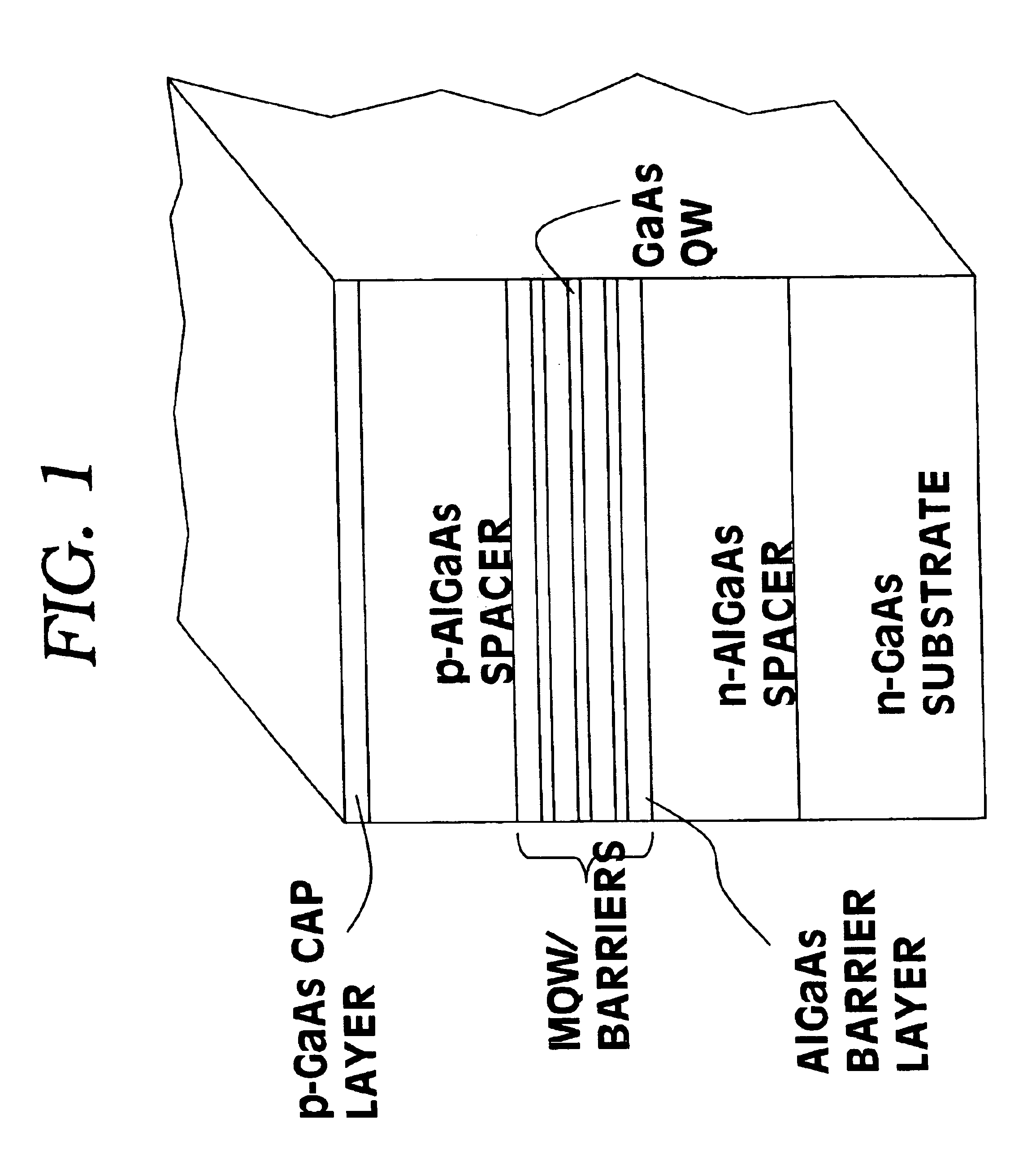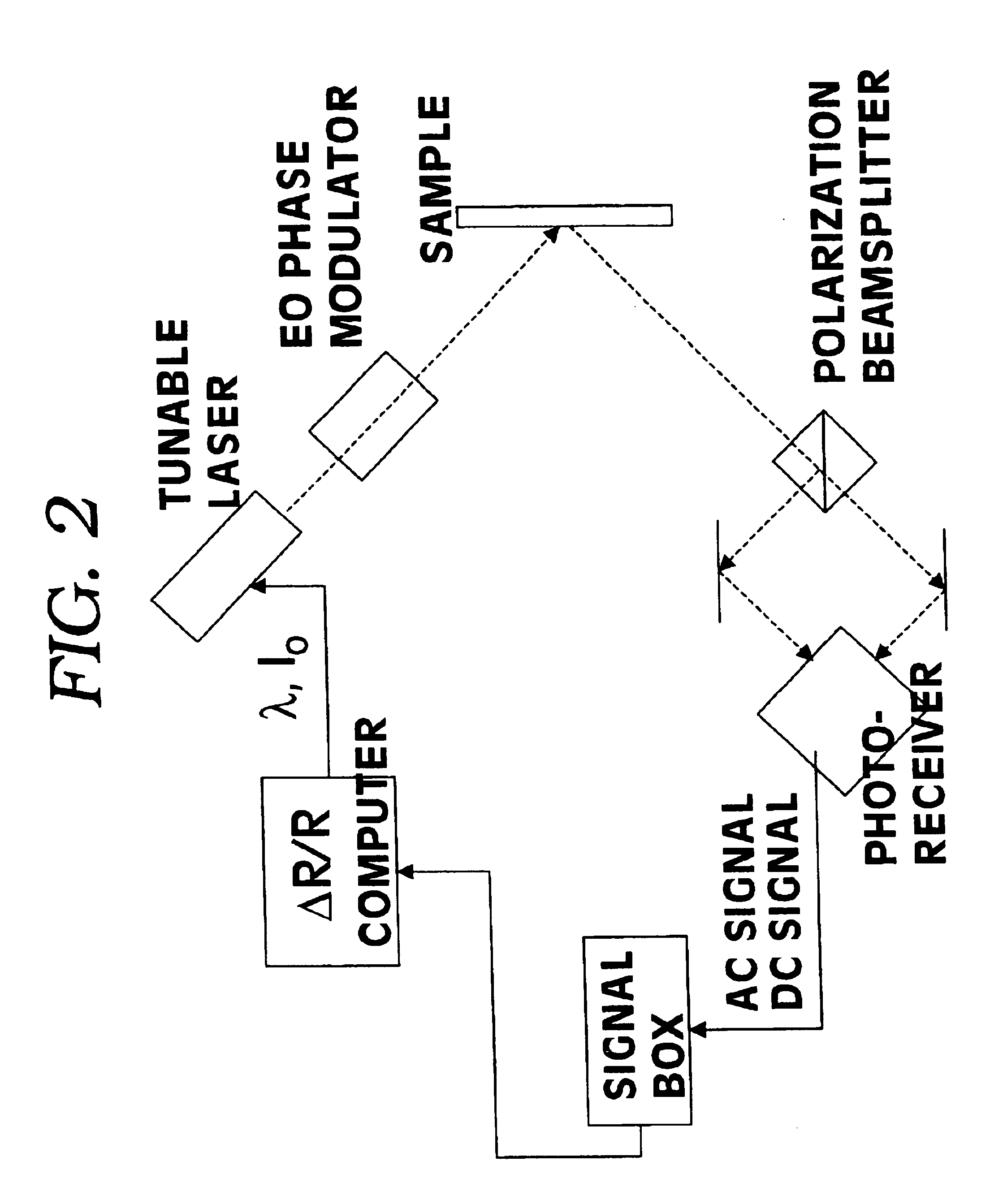Polarization modulation photoreflectance characterization of semiconductor quantum confined structures
a quantum confined structure and photoreflectance technology, applied in the field of optical characterization of semiconductor quantum confined structures, can solve the problems of increasing system complexity, time-consuming and expensive device manufacturing steps, and widely available optical spectrometry techniques such as ellipsometry or linear reflectance do not have the sensitivity required to observe quantum confined structure signatures, so as to improve the appreciation of the present contribution to the art
- Summary
- Abstract
- Description
- Claims
- Application Information
AI Technical Summary
Benefits of technology
Problems solved by technology
Method used
Image
Examples
Embodiment Construction
[0022]The following discusses use of the inventive polarization modulation photoreflectance (PMPR) technique for characterization of quantum well structures. It is understood that the PMPR technique of the present drawings may be used to analyze any quantum confined structure, the discussion of quantum well structures considered to be exemplary only and in no way limiting in scope.
[0023]Turning now descriptively to the drawings, in which similar reference characters denote similar elements throughout the several views, FIG. 1 contains, in an exaggerated view, an exemplary quantum well test structure that may be characterized using the polarization modulation photo-reflectance technique of the present disclosure. Quantum well test structure, which may be grown using molecular beam epitaxy, comprises a negatively doped gallium arsenide (GaAs) semiconductor substrate upon which is grown an negatively doped aluminum gallium arsenide (AlGaAs) “spacer” layer of ˜94.5 nanometer thickness. ...
PUM
 Login to View More
Login to View More Abstract
Description
Claims
Application Information
 Login to View More
Login to View More - R&D
- Intellectual Property
- Life Sciences
- Materials
- Tech Scout
- Unparalleled Data Quality
- Higher Quality Content
- 60% Fewer Hallucinations
Browse by: Latest US Patents, China's latest patents, Technical Efficacy Thesaurus, Application Domain, Technology Topic, Popular Technical Reports.
© 2025 PatSnap. All rights reserved.Legal|Privacy policy|Modern Slavery Act Transparency Statement|Sitemap|About US| Contact US: help@patsnap.com



